Christoforos Nalmpantis
Teaching Large Language Models to Reason with Reinforcement Learning
Mar 07, 2024



Abstract:Reinforcement Learning from Human Feedback (\textbf{RLHF}) has emerged as a dominant approach for aligning LLM outputs with human preferences. Inspired by the success of RLHF, we study the performance of multiple algorithms that learn from feedback (Expert Iteration, Proximal Policy Optimization (\textbf{PPO}), Return-Conditioned RL) on improving LLM reasoning capabilities. We investigate both sparse and dense rewards provided to the LLM both heuristically and via a learned reward model. We additionally start from multiple model sizes and initializations both with and without supervised fine-tuning (\textbf{SFT}) data. Overall, we find all algorithms perform comparably, with Expert Iteration performing best in most cases. Surprisingly, we find the sample complexity of Expert Iteration is similar to that of PPO, requiring at most on the order of $10^6$ samples to converge from a pretrained checkpoint. We investigate why this is the case, concluding that during RL training models fail to explore significantly beyond solutions already produced by SFT models. Additionally, we discuss a trade off between maj@1 and pass@96 metric performance during SFT training and how conversely RL training improves both simultaneously. We then conclude by discussing the implications of our findings for RLHF and the future role of RL in LLM fine-tuning.
Understanding the Effects of RLHF on LLM Generalisation and Diversity
Oct 10, 2023Abstract:Large language models (LLMs) fine-tuned with reinforcement learning from human feedback (RLHF) have been used in some of the most widely deployed AI models to date, such as OpenAI's ChatGPT, Anthropic's Claude, or Meta's LLaMA-2. While there has been significant work developing these methods, our understanding of the benefits and downsides of each stage in RLHF is still limited. To fill this gap, we present an extensive analysis of how each stage of the process (i.e. supervised fine-tuning (SFT), reward modelling, and RLHF) affects two key properties: out-of-distribution (OOD) generalisation and output diversity. OOD generalisation is crucial given the wide range of real-world scenarios in which these models are being used, while output diversity refers to the model's ability to generate varied outputs and is important for a variety of use cases. We perform our analysis across two base models on both summarisation and instruction following tasks, the latter being highly relevant for current LLM use cases. We find that RLHF generalises better than SFT to new inputs, particularly as the distribution shift between train and test becomes larger. However, RLHF significantly reduces output diversity compared to SFT across a variety of measures, implying a tradeoff in current LLM fine-tuning methods between generalisation and diversity. Our results provide guidance on which fine-tuning method should be used depending on the application, and show that more research is needed to improve the trade-off between generalisation and diversity.
Neurons in Large Language Models: Dead, N-gram, Positional
Sep 09, 2023Abstract:We analyze a family of large language models in such a lightweight manner that can be done on a single GPU. Specifically, we focus on the OPT family of models ranging from 125m to 66b parameters and rely only on whether an FFN neuron is activated or not. First, we find that the early part of the network is sparse and represents many discrete features. Here, many neurons (more than 70% in some layers of the 66b model) are "dead", i.e. they never activate on a large collection of diverse data. At the same time, many of the alive neurons are reserved for discrete features and act as token and n-gram detectors. Interestingly, their corresponding FFN updates not only promote next token candidates as could be expected, but also explicitly focus on removing the information about triggering them tokens, i.e., current input. To the best of our knowledge, this is the first example of mechanisms specialized at removing (rather than adding) information from the residual stream. With scale, models become more sparse in a sense that they have more dead neurons and token detectors. Finally, some neurons are positional: them being activated or not depends largely (or solely) on position and less so (or not at all) on textual data. We find that smaller models have sets of neurons acting as position range indicators while larger models operate in a less explicit manner.
Augmented Language Models: a Survey
Feb 15, 2023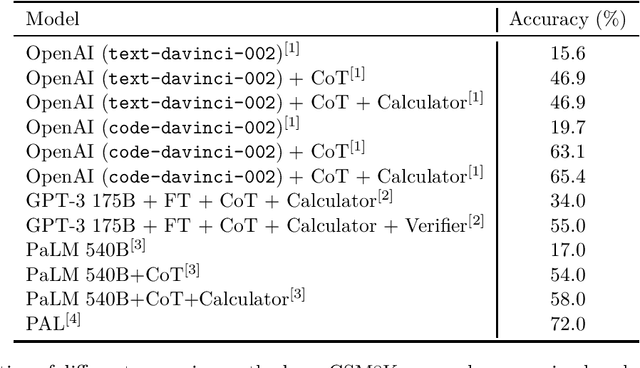

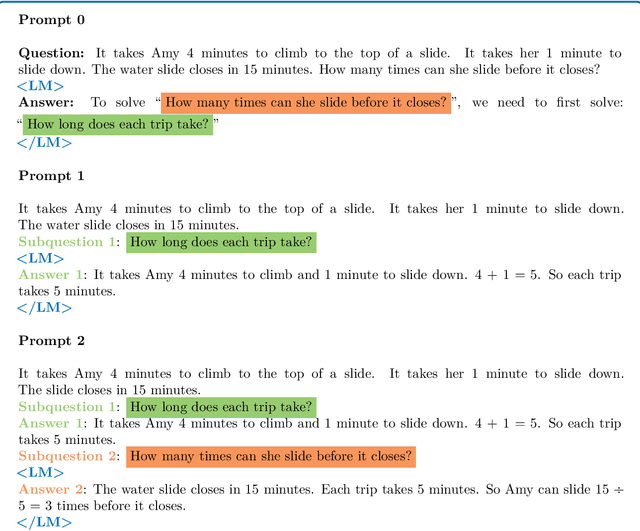

Abstract:This survey reviews works in which language models (LMs) are augmented with reasoning skills and the ability to use tools. The former is defined as decomposing a potentially complex task into simpler subtasks while the latter consists in calling external modules such as a code interpreter. LMs can leverage these augmentations separately or in combination via heuristics, or learn to do so from demonstrations. While adhering to a standard missing tokens prediction objective, such augmented LMs can use various, possibly non-parametric external modules to expand their context processing ability, thus departing from the pure language modeling paradigm. We therefore refer to them as Augmented Language Models (ALMs). The missing token objective allows ALMs to learn to reason, use tools, and even act, while still performing standard natural language tasks and even outperforming most regular LMs on several benchmarks. In this work, after reviewing current advance in ALMs, we conclude that this new research direction has the potential to address common limitations of traditional LMs such as interpretability, consistency, and scalability issues.
PEER: A Collaborative Language Model
Aug 24, 2022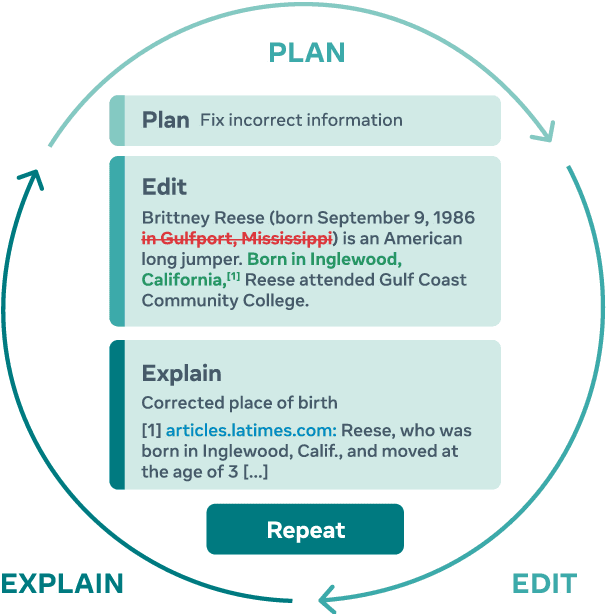
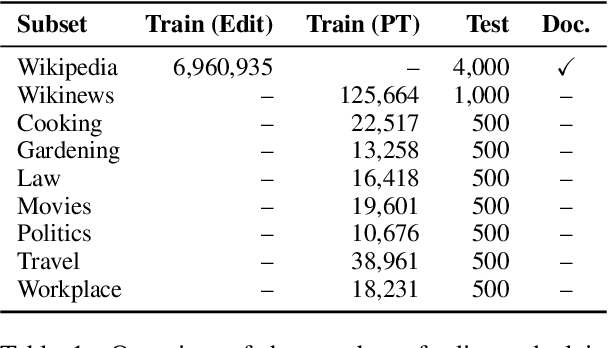
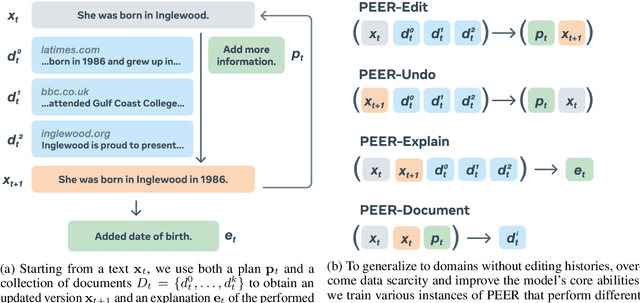
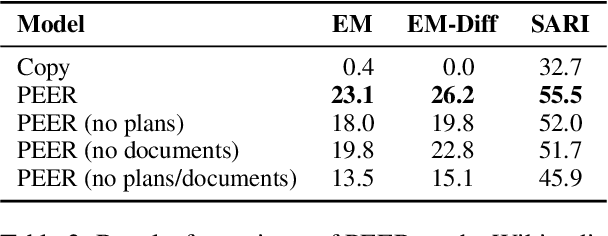
Abstract:Textual content is often the output of a collaborative writing process: We start with an initial draft, ask for suggestions, and repeatedly make changes. Agnostic of this process, today's language models are trained to generate only the final result. As a consequence, they lack several abilities crucial for collaborative writing: They are unable to update existing texts, difficult to control and incapable of verbally planning or explaining their actions. To address these shortcomings, we introduce PEER, a collaborative language model that is trained to imitate the entire writing process itself: PEER can write drafts, add suggestions, propose edits and provide explanations for its actions. Crucially, we train multiple instances of PEER able to infill various parts of the writing process, enabling the use of self-training techniques for increasing the quality, amount and diversity of training data. This unlocks PEER's full potential by making it applicable in domains for which no edit histories are available and improving its ability to follow instructions, to write useful comments, and to explain its actions. We show that PEER achieves strong performance across various domains and editing tasks.
 Add to Chrome
Add to Chrome Add to Firefox
Add to Firefox Add to Edge
Add to Edge